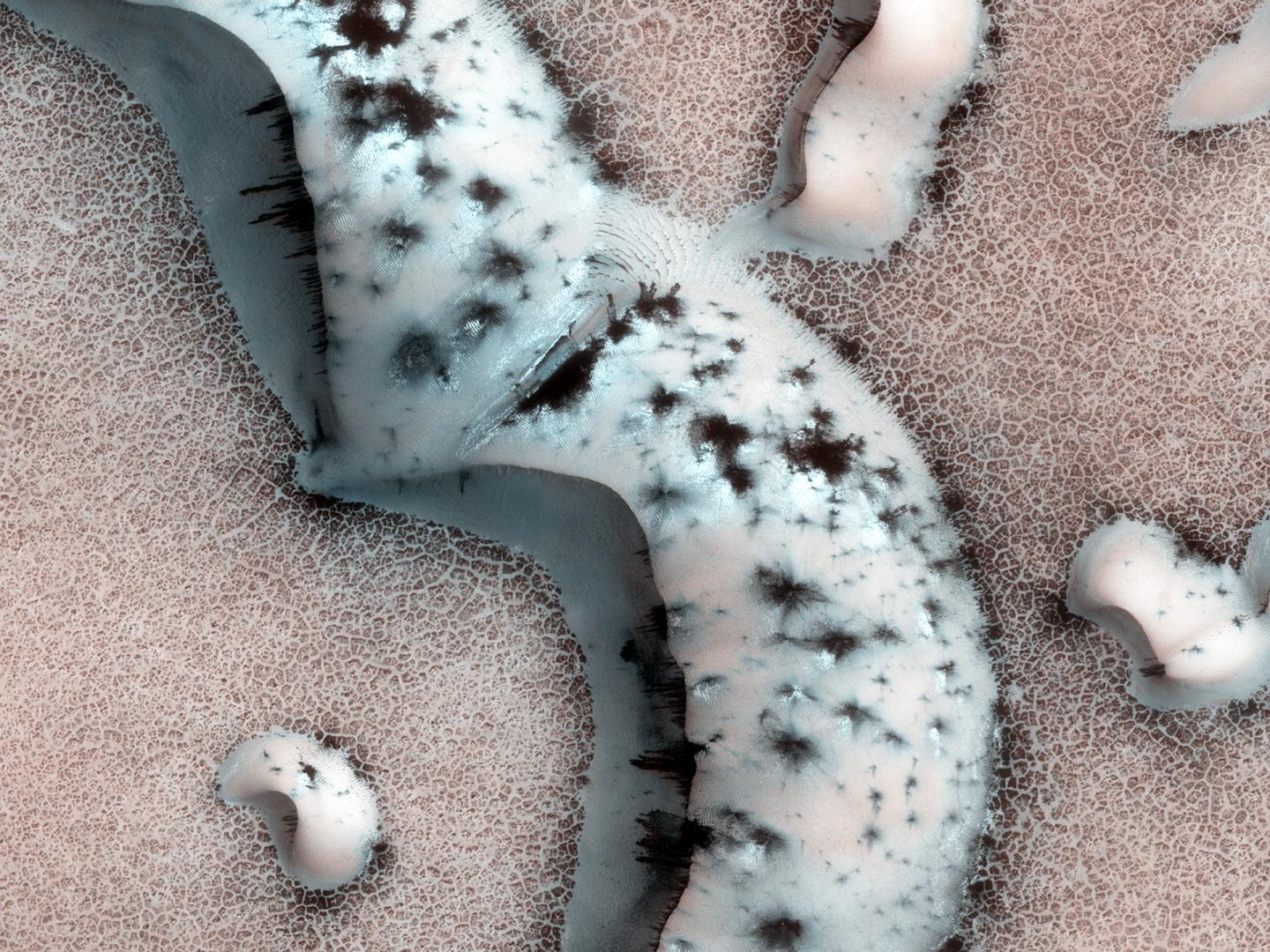Scientists around the world have spent decades surveying Mars for signs of life, but what if they could create material that can support life on Mars? Now a group of scientists inspired by Carl Sagan’s idea of vaporizing the northern polar ice caps came up with the idea to artificially create life-supporting conditions on the Red Planet. The main driver of the new idea was greenhouse gases, which could increase the temperature on the planet and cause water to enter its liquid state.
Researchers at Harvard University collaborated with NASA’s Jet Propulsion Lab (JPL) and the University of Edinburgh. They created a material that can support life on Mars by causing regional temperature changes that cause water to be sustained in its liquid state. Their work was published in the journal Nature Astronomy.
“This regional approach to making Mars habitable is much more achievable than global atmospheric modification,” Robin Wordsworth of the Harvard John A. Paulson School of Engineering and Applied Sciences (SEAS) and the Department of Earth and Planetary Science said in a statement. “Unlike the previous ideas to make Mars habitable, this is something that can be developed and tested systematically with materials and technology we already have.”
“Mars is the most habitable planet in our Solar System besides Earth,” JPL Research Scientist Laura Kerber said. “But it remains a hostile world for many kinds of life. A system for creating small islands of habitability would allow us to transform Mars in a controlled and scalable way.”
The researchers got the idea for material that can support life on Mars from a phenomenon that already occurs on the planet. The ice caps on Mars are made out of water ice and frozen CO2. CO2 allows sunlight to penetrate the structure and traps heat like its gas form. That causes a greenhouse effect, which warms temperatures under the ice.
“We started thinking about this solid-state greenhouse effect and how it could be invoked for creating habitable environments on Mars in the future,” Wordsworth said. “We started thinking about what kind of materials could minimize thermal conductivity but still transmit as much light as possible.”
The researchers decided to test this situation with silica aerogel, which is one of the best insulators ever created. The aerogel is already used on Mars for the rovers that explore it.
“Silica aerogel is a promising material because its effect is passive,” Kerber said. “It wouldn’t require large amounts of energy or maintenance of moving parts to keep an area warm over long periods of time.”
Researchers modeled a system that resembles the Martian surface and then tested this insulation material with their model. The results suggested that the average temperatures of the mid-latitudes on Mars increased to normal temperatures on Earth.
The researchers believe the new material can be used to build habitable domes and artificial biospheres that look like buildings on Earth. The team hopes to test material that can support life on Mars in an environment similar to the planet on Earth. They also want to test it in Chile or Antarctica.





